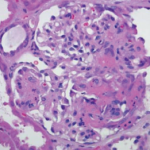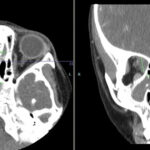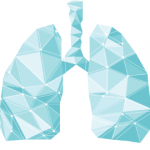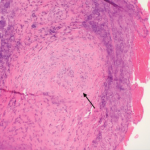“There’s no specific proof that there’s a genetic link or specific environmental etiology that we’re aware of,” explains Paul Dellaripa, MD, who is a rheumatologist in the division of rheumatology at Brigham & Women’s Hospital in Boston and is also an associate professor of medicine at Harvard Medical School. “The main areas of the disease are the respiratory tract—all the way from the nose down to the lungs and the kidney.”
The disease is most prevalent among Caucasian men and women who are middle age or older, although cases in children have been noted, he says. Individuals with GPA may also experience peripheral neuropathy in their hands or feet, causing numbness or nerve pain that negatively affects their ability to care for themselves. In rare cases, he says it can also affect a person’s vision and hearing, resulting in blindness or hearing loss.
Treatment typically consists of administering a host of drugs that may include corticosteroids, rituximab, mycophenolate, methotrexate or cyclophosphamide, which is a chemotherapeutic agent. Now that more drugs are available, patients stand a much better chance of controlling, but not curing, their disease.
Still, he says many doctors have never seen a case of GPA. Patients with the condition often complain of respiratory problems, cough, sinus problems or earaches, and are typically given antibiotics, which don’t manage the root of the disease.
“Once the diagnosis is made, the physician really has to be on top of it, watching the kidneys and lung function very closely, and be very cognizant of recurring inflammation, flares and recurrence of the disease,” says Dr. Dellaripa. “You can have ongoing tissue damage and disease activity in patients at a very subtle level. You can miss it if you’re not watching.”
Ms. Abbott’s symptoms first appeared when she was in her mid-30s. She recalls her vision being distorted, blood in her urine, and giant bruises appearing on her legs after gently bumping into objects. An adjunct professor in health sciences at California State University, Fullerton, for the past 23 years, she says doctors repeatedly tested her kidneys and conducted other medical tests for 14 years, but couldn’t find anything wrong.
Then in August 2007, doctors at UCLA’s Jules Stein Eye Institute diagnosed her with a central retina vascular inclusion in her left eye, which made her functionally blind in that eye.
“That was the key that opened the door to unlock the answer to what was going on in my body,” Ms. Abbott says. “They said something else was going on and sent me across the street to a rheumatologist … . It took two months of testing and ruling things out to figure out a diagnosis.”



